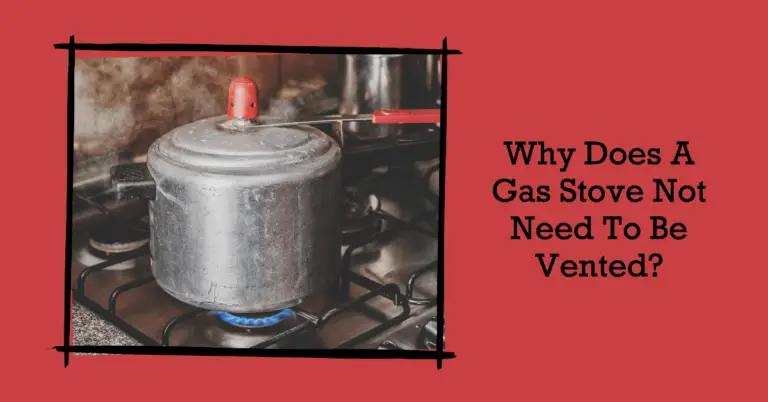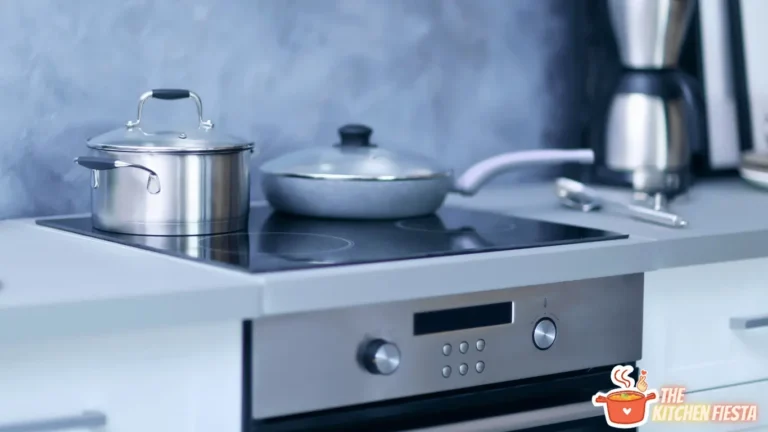Why Is Stove Top Stuffing Banned? The Facts You Need to Know

Stove Top stuffing is a famous Thanksgiving side dish families have enjoyed for decades. However, it has recently been banned in some places due to potential health risks associated with the product. This has left many wondering why such a beloved dish is being taken off the shelves.
The ban is due to the presence of two preservatives, BHA and BHT, which are said to have carcinogenic properties and might impair blood clotting. These preservatives are commonly used in many processed foods to extend their shelf life. However, they have been banned in several countries, including Europe, Japan, and the United Kingdom, due to concerns about their safety. As a result, anyone looking for this product in these countries will be sorely disappointed.
Despite its popularity in the United States, Stove Top stuffing has been controversial in other parts of the world. Many believe using these preservatives in food products is unnecessary and potentially harmful. As a result, some countries have taken steps to ban the use of these chemicals in food altogether.
The History of Stove Top Stuffing
Stove Top Stuffing is a popular side dish that has been a staple in American households since its creation in 1972. The product was invented by Ruth Siems, a home economist who wanted to provide a quick and easy way for busy homemakers to make stuff without having to bake a turkey or chicken.
Siems’ patent for the product was based on a specific size of breadcrumb that makes the rehydration, or addition of water, work. The product quickly gained popularity due to its convenience and ease of use. It was marketed as a quick and easy way to make stuffing that tasted homemade.
General Foods Corporation initially owned Stove Top Stuffing, which later merged with Kraft Foods. Today, the product is owned by Kraft Heinz Company. It has various flavors, including turkey, chicken, cornbread, and savory herbs.
Over the years, Stove Top Stuffing has become a popular Thanksgiving side dish in many American households. It is also used in various recipes, including casseroles and meatloaf. Despite its popularity, concerns have been about the safety of some of the ingredients used in Stove Top Stuffing, including propylene glycol. This preservative has been linked to health problems.
Understanding Food Regulations
Food regulations are put in place to ensure the safety and quality of food products. These regulations vary by country and are enforced by government agencies. The Food and Drug Administration (FDA) and the Department of Agriculture (USDA) regulate food products in the United States.
The regulations set by the FDA and USDA include standards for food labeling, food additives, and food safety. Food additives are substances added to food products to enhance flavor, texture, or appearance. The FDA must approve additives before they can be used in food products.
Food safety regulations aim to prevent foodborne illnesses by setting food handling, processing, and storage standards. These regulations also include requirements for food manufacturers to monitor and control potential product hazards.
When a food product is found to violate regulations, it may be banned or restricted. This can happen for various reasons, including health concerns or ethical considerations.
Stove Top stuffing, for example, contains a preservative called propylene glycol that has been linked to health problems. While propylene glycol is not banned in the United States, it is prohibited or limited in food products in some other countries.
It is important for consumers to be aware of food regulations and to read food labels carefully. By doing so, they can make informed decisions about the products they consume and ensure their safety and quality.
Stove Top Stuffing and Health Concerns
Stove Top stuffing is a popular side dish that has been around for decades. However, there are some concerns about its safety and health effects. This section will analyze the ingredients in Stove Top stuffing and discuss their potential health risks.
Ingredients Analysis
Stove Top stuffing contains several ingredients that may raise concerns for some consumers. For example, it contains high sodium levels, which can contribute to high blood pressure and other health problems. It also contains hydrogenated oils, which have been linked to heart disease and other health issues.
Additionally, Stove Top stuffing contains a preservative called propylene glycol, which has been linked to health problems such as cancer, liver damage, and kidney issues. This preservative is banned or limited in food products in some places.
Potential Health Risks
The high sodium and hydrogenated oils levels in Stove Top stuffing can contribute to health problems such as heart disease, high blood pressure, and obesity. The preservative propylene glycol has also been linked to several health issues, including cancer, liver damage, and kidney issues.
While the levels of these ingredients in Stove Top stuffing may not be harmful in small amounts, consuming large quantities of the product may increase the risk of these health problems. Consumers concerned about these risks may want to make their own stuffing from scratch or choose a different side dish.
The Banning of Stove Top Stuffing
Stove Top Stuffing is a famous pre-packaged stuffing mix that has been a staple of American households for decades. However, it has been banned in some countries due to health concerns. The primary reason for the ban is the presence of a chemical called propylene glycol, which is used as a preservative in the stuffing mix.
Propylene glycol is known to cause health problems, including liver damage, kidney issues, and cancer. In some countries, the use of propylene glycol in food products is limited or banned altogether. The European Union, for instance, has banned the use of propylene glycol in food products due to its potential health risks.
In the United States, the Food and Drug Administration (FDA) has approved using propylene glycol in food products, including Stove Top Stuffing. However, some health experts have raised concerns about the safety of the chemical and its potential long-term effects on human health.
In addition to the potential health risks associated with propylene glycol, the preservative can also cause food spoilage. This is because propylene glycol can inhibit the growth of bacteria, leading to the development of harmful bacteria that can cause foodborne illnesses.
Despite the concerns raised by health experts, Stove Top Stuffing remains a popular choice among consumers in the United States. However, consumers concerned about the potential health risks associated with propylene glycol may want to consider making their stuffing mix using natural ingredients.
Impact on Consumers and Industry
Propylene glycol in Stove Top stuffing has led to concerns about its impact on consumers’ health. Propylene glycol is a preservative linked to health problems such as cancer, liver damage, and kidney issues. In some places, propylene glycol is banned or limited in food products. The potential health risks associated with the preservative have caused some consumers to avoid the product altogether.
The impact of the ban on the industry has been significant. Stove Top stuffing is a well-known brand that has been around for decades. The prohibition of propylene glycol has forced the company to reformulate its product, resulting in changes to the taste and texture of the stuffing. The company has also had to invest in new equipment and processes to produce the new formulation, increasing costs.
The ban on propylene glycol has also affected the availability of the product. In some areas where the preservative is banned or limited, Stove Top stuffing is no longer available. This has led to decreased sales for the company and affected its market share.
Despite these challenges, the industry has responded to the ban by developing new preservatives and ingredients that can be used in stuffing products. This has led to the introduction of new products free from propylene glycol and other banned preservatives. While these products may not have the same taste and texture as the original Stove Top stuffing, they provide consumers with a safe and healthy alternative.
Alternative Options to Stove Top Stuffing
For those looking for alternative options to Stove Top stuffing, many choices are available in the market. Here are some of the popular options:
1. Homemade Stuffing
Homemade stuffing is an excellent alternative to Stove Top stuffing. It is easy to make and can be customized to suit individual tastes. One can use a variety of bread, herbs, and spices to make the stuffing. The homemade stuffing can be baked in the oven or cooked on the stove.
2. Other Brands of Stuffing
Many other brands of stuffing available in the market do not contain the banned preservatives. Some popular brands include Pepperidge Farm, Mrs. Cubbison’s, and Trader Joe’s.
3. Vegetarian and Vegan Stuffing
Many options are available for those who follow a vegetarian or vegan diet. One can make a vegetarian or vegan stuffing using broth, vegetables, and herbs. Many brands of vegetarian and vegan stuffing are also available in the market.
4. Gluten-Free Stuffing
For those who are gluten intolerant, there are many options available. One can make gluten-free stuffing using gluten-free bread or cornbread. There are also many brands of gluten-free stuffing available in the market.
Conclusion
In conclusion, using propylene glycol in Stove Top stuffing has been a cause for concern among health experts. While it is not banned in the United States, it has been banned or limited in other countries due to its potential health risks, including cancer, liver damage, and kidney issues.
Additionally, Stove Top stuffing contains high levels of salt and sugar and a mix of chemicals under the general label “flavor” and the chemical preservative BHT. These ingredients have been linked to health problems and should be consumed in moderation.
It is important for consumers to be aware of the ingredients in the foods they eat and to make informed choices about what they consume. While Stove Top stuffing may be a convenient and tasty option for some, it is important to consider the potential health risks associated with its consumption.
Overall, it is up to individuals to decide whether or not they want to include Stove Top stuffing in their diets. However, it is recommended that they do so in moderation and with an understanding of the potential health risks associated with its consumption.
Frequently Asked Questions
Is Stove Top stuffing banned in any country?
There are currently no countries that have banned Stove Top stuffing. However, there have been reports of certain stores or locations excluding the product due to concerns over its ingredients and potential health risks.
What are the ingredients in Stove Top stuffing?
The ingredients in Stove Top stuffing vary depending on the flavor but generally include bread crumbs, salt, sugar, and various spices and flavorings. Some flavors may also contain dehydrated vegetables or meat products.
Has Stove Top stuffing been recalled?
There have been no recent recalls of Stove Top stuffing. However, there have been recalls in the past due to potential contamination with salmonella or other harmful bacteria.
What are the health risks associated with Stove Top stuffing?
Stove Top stuffing has been criticized for its high sodium and preservative content and the use of artificial flavors and colors. Some studies have linked these ingredients to an increased risk of health problems such as heart disease, high blood pressure, and cancer. Additionally, there have been concerns over the potential presence of harmful bacteria in the product.
Are there any alternatives to Stove Top stuffing?
Many alternatives to Stove Top stuffing include homemade stuffing recipes and other store-bought brands. Some popular options include Pepperidge Farm stuffing, Mrs. Cubbison’s stuffing, and Trader Joe’s stuffing mix.
Has there been any research done on the safety of Stove Top stuffing?
There have been limited studies on the safety of Stove Top stuffing specifically. However, research has been conducted on the potential health risks associated with the ingredients commonly found in the product, such as high sodium content and artificial flavors and colors. More research is needed to fully understand the potential health risks of consuming Stove Top stuffing.





